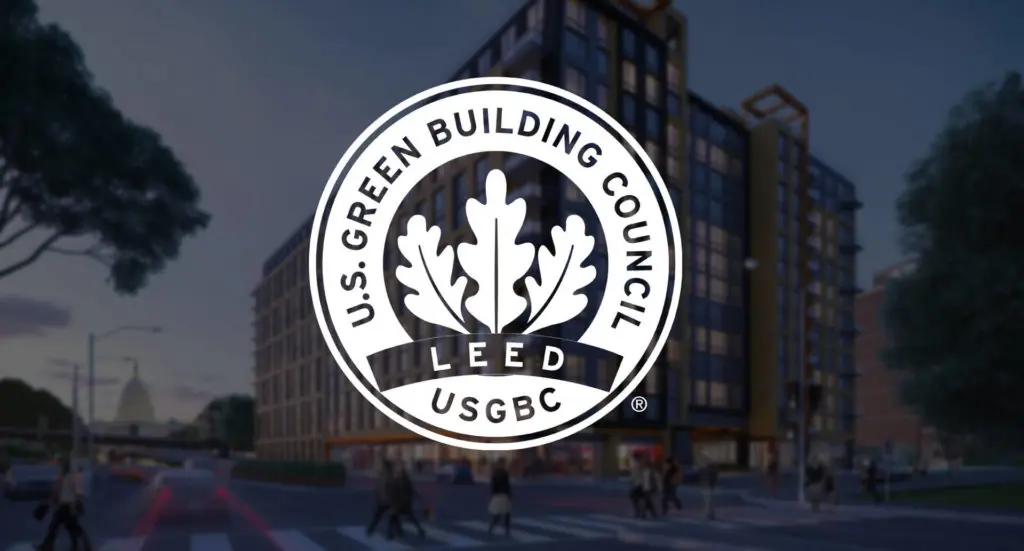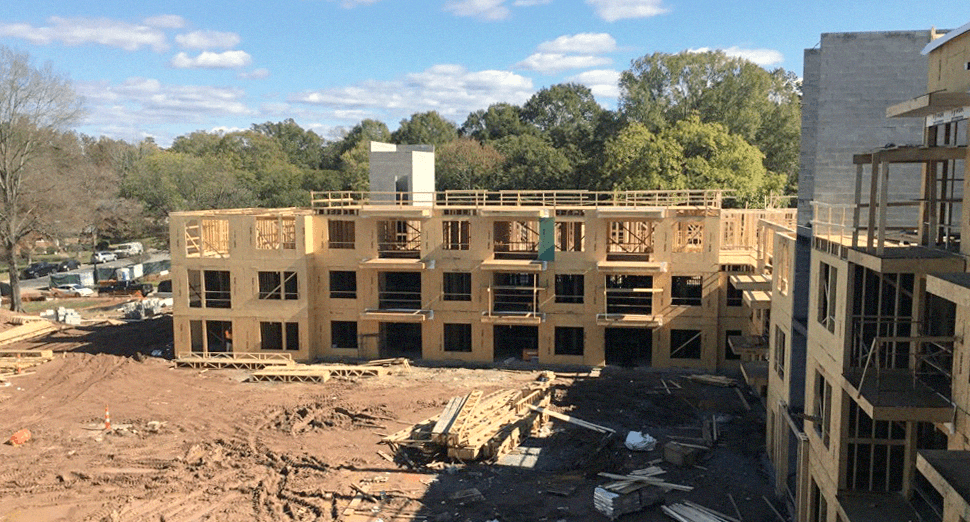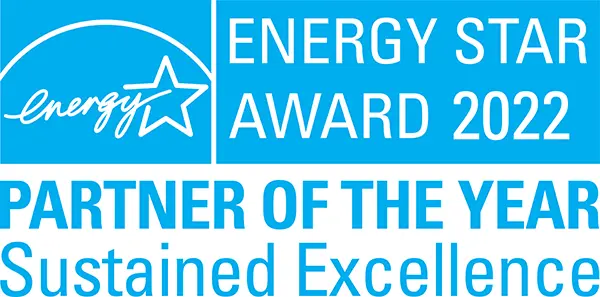What is LEED Certification?
LEED Certification is a globally recognized system for green building standards created by the U.S. Green Building Council (USGBC). It provides a framework for implementing practical and measurable green building design, construction, operations, and maintenance solutions to encourage sustainable construction in eight key focus areas. Participating in LEED showcases a commitment to environmental leadership and responsibility, while offering both environmental and financial rewards.
LEED Certification Pathways
LEED BD+C
Building Design & Construction
For buildings that are being newly constructed or going through a major renovation; includes New Construction, Core & Shell, Schools, Retail, Hospitality, Data Centers, Warehouses & Distribution Centers, and Healthcare.
LEED H
Homes
For residential LEED projects; includes pathways for Homes (single family), Multifamily Lowrise (1-3 stories) and Multifamily Midrise (four or more stories).
LEED O+M
Operations & Maintenance
For existing buildings that are undergoing improvement work or little to no construction; applies to any type of existing building.
LEED ID+C
Interior Design & Construction
For complete interior fit-out projects; applies to Commercial Interiors, and also includes applications for Retail and Hospitality.
LEED ND
Neighborhood Development
For new land development projects or redevelopment projects containing residential uses, nonresidential uses, or a mix; includes Plan and Built Project.
LEED Certification Services
Southern Energy Management is a designated LEED Provider and USGBC Member, with a team of in-house LEED AP’s and Green Raters. Let our experienced team help you achieve LEED certification – hassle-free! Reach out for a free consultation →
Design Review, Energy Modeling, and Setting Objectives
Working with single-family, multifamily, mixed-use, new construction, and renovation projects
Team Onboarding and Education
Onsite training for general contractors and sub-contractors
Onsite Third-Party Verification
Insulation grading, blower door, and HVAC testing
Documentation & Submission
We are your representative to USGBC/GBCI from documentation to providing clarification and project-by-project specification questions
Marketing & Sales Support
Once your project is certified, we can support with signage, talking points, sales team training and more!
Benefits of LEED Certification
- Higher Property Value: Green buildings often have a higher resale value
- Tax and Zoning Advantages: Some municipalities offer tax rebates, zoning allowances, or fee reductions for LEED projects
- Attract Tenants: Improve your marketability while enhancing your brand image from being associated with sustainable practices
- Reduced Risk: Sustainable buildings may have fewer building envelope, operational, and occupant discomfort issues, leading to less financial risk in the investment
- Attracting Capital: An increasing number of investors prioritize sustainability, making green buildings more attractive for investment
- Positive Environmental Impact: Lower carbon footprint and reduced strain on natural resources
- Operational Savings: Increased building efficiency means utility savings for homeowners and tenants
- Improved Indoor Air Quality: Healthier breathing environments with fewer pollutants
- Enhanced Comfort: Efficient systems lead to consistent temperatures and better air circulation
- Healthier Living Environment: Reduced exposure to toxic materials and better ventilation.
- Future-proof Investment: As energy costs rise, efficient homes can offer long-term savings.
- Resilience: Some LEED practices can make homes more resilient to extreme weather events.
LEED Certification Process
1. Discovery Call
We review your project plans and certification goals to create a game plan that meets your timeline and criteria.
2. Kick Off/Design Charette
We create a project specific LEED scorecard with the requirements and customized credits to meet your certification and sustainability goals. We review this with the design and construction team for buy-in and to make adjustments as needed.
3. Implementation
We handle everything from there - from educating your team, to ensuring credits are properly implemented, inspected, and verified.
4. Design and Construction Review
We submit all the necessary paperwork and documentation, then support with any adjustments or clarifications. The entire certification review process typically takes 4 weeks.
* Note: Construction Review does not apply to LEED H (Homes)
5. Certification!
Congrats – you’re ready to tell the world about how your project is leading the change toward a more resilient built environment! We are here to support with getting the word out with data, sales team training, or creating a one-of-a-kind marketing piece.
Recent LEED Project Samples

NOVEL South Capitol
- Location: Washington, DC
- Developer: Crescent Communities
- Certification: LEED BD+C (Silver)
- LEED Fact: NOVEL South Capitol has a large cistern which captures rainwater and reuses for landscape botanicals around the building and grounds.

U.S. Embassy Housing
- Location: Port-au-Prince, Haiti
- Developer: US Department of State, Bureau of Overseas Buildings
- Architect: Clark Nexsen
- GC: ACC Construction
- Certification: LEED for Homes (Gold)
- LEED Fact: The US Embassy Housing townhomes achieved a Home Energy Rating Index (HERS) of 37 equating to over 30% of the overall LEED credits achieved. The construction of these homes consists of poured concrete floors, walls, and roof systems with continuous insulation at the roofdeck and reflective exterior finishes. Each townhome has a solar hot water heater and a ductless mini split hvac system. Carports are also integrated with PV solar.
Frequently Asked Questions
Projects pursuing LEED earn points across several areas that address aspects of a building that affect the planet, the local economy, and the occupants. Based on the number of points achieved, a project can receive one of four LEED rating levels:
- Certified
- Silver
- Gold
- Platinum
It depends. Depending on the location of the project, nature of the property, the code requirements of the AHJ, and the surrounding area, there may be numerous prerequisites and credits in LEED that a project is already meeting without making change orders or adding scopes of work.
If a project is in a high density area with a stringent local code, LEED baseline certification is not going to be a big lift. However if a project is in a low density or even a rural area with more lenient building codes, there will likely be more items to change and add.
The number one thing that will make LEED certification easier for all involved, is if an AP is engaged early in the process, the developer/owner is decisive about what they want to build, and the entire project team is brought into making the LEED certification work.
The cost of LEED certification depends on the pathway pursued and the size of the building. For a full quote on your project, please contact us and we will outline both the AP Verification work and LEED Certification fees.
To check out the certification costs in advance, visit USGBC’s LEED Certification Fee webpage.
We can review your plans and progress to see if all LEED requirements have been met and what credits you are eligible for.
It may, at this point, be unlikely that a project can achieve LEED certification, however, it is, in some cases, possible. All projects have the option of continuing the build and preparing for LEED O+M certification, which allows a building that has been in service for at least a year to pursue the existing building certification.
This is largely dependent upon several factors. When does the project team decide to pursue LEED Certification, at what stage is an AP engaged, how long from issuance of the CD plan set does it take to complete construction, and many more.
In general, it is safe to assume that the LEED certification process will last at least as long as the entire project design development, planning, and full construction.
The LEED certification your project should pursue depends on the type of project, if it’s new construction, existing, the extent of the renovation, etc! There are also options for certifying your building vs. the site. Check out our section on “LEED Certification Pathways” above or give us a call to determine the correct pathway.
The minimum certification level, LEED Certified, starts at 40 points. From there, higher levels of certification have different thresholds:
- Certified: 40-49
- Silver: 50-59
- Gold: 60-79
- Platinum: 80+
It is also worth noting that there are non-point scoring required credits that will need to be met; so ensure those are captured outside of the scorable credits to earn certification.
The documentation process for LEED projects is set up to be aligned with the project timeline, and with a LEED AP’s early involvement, requirements can be communicated and planned for ahead of time, so additional time isn’t needed later.
Have more questions? Our LEED experts are happy to help!
Schedule a meeting →
Certification Comparison Tool
Ready to Get Started?
Schedule a meeting with our green building specialists to review your project goals and challenges.
About Us
North Carolina’s solar power and building performance expert. Founded in 2001, we’ve worked for 20+ years to improve the way people make and use energy.
© 2023 Southern Energy Management, Inc.















